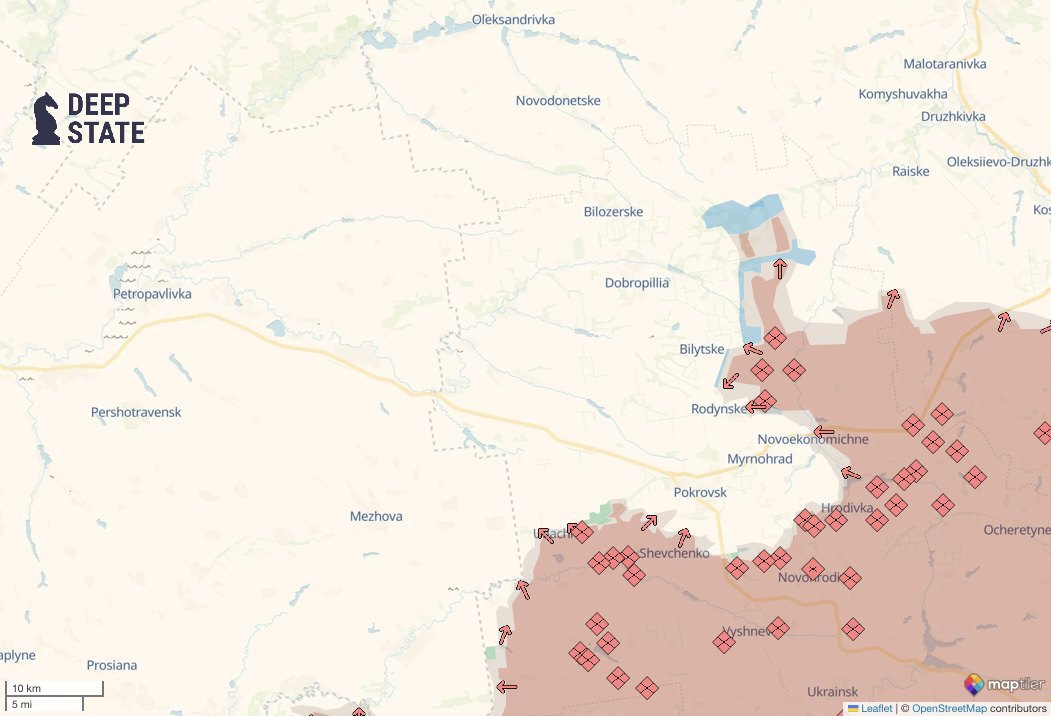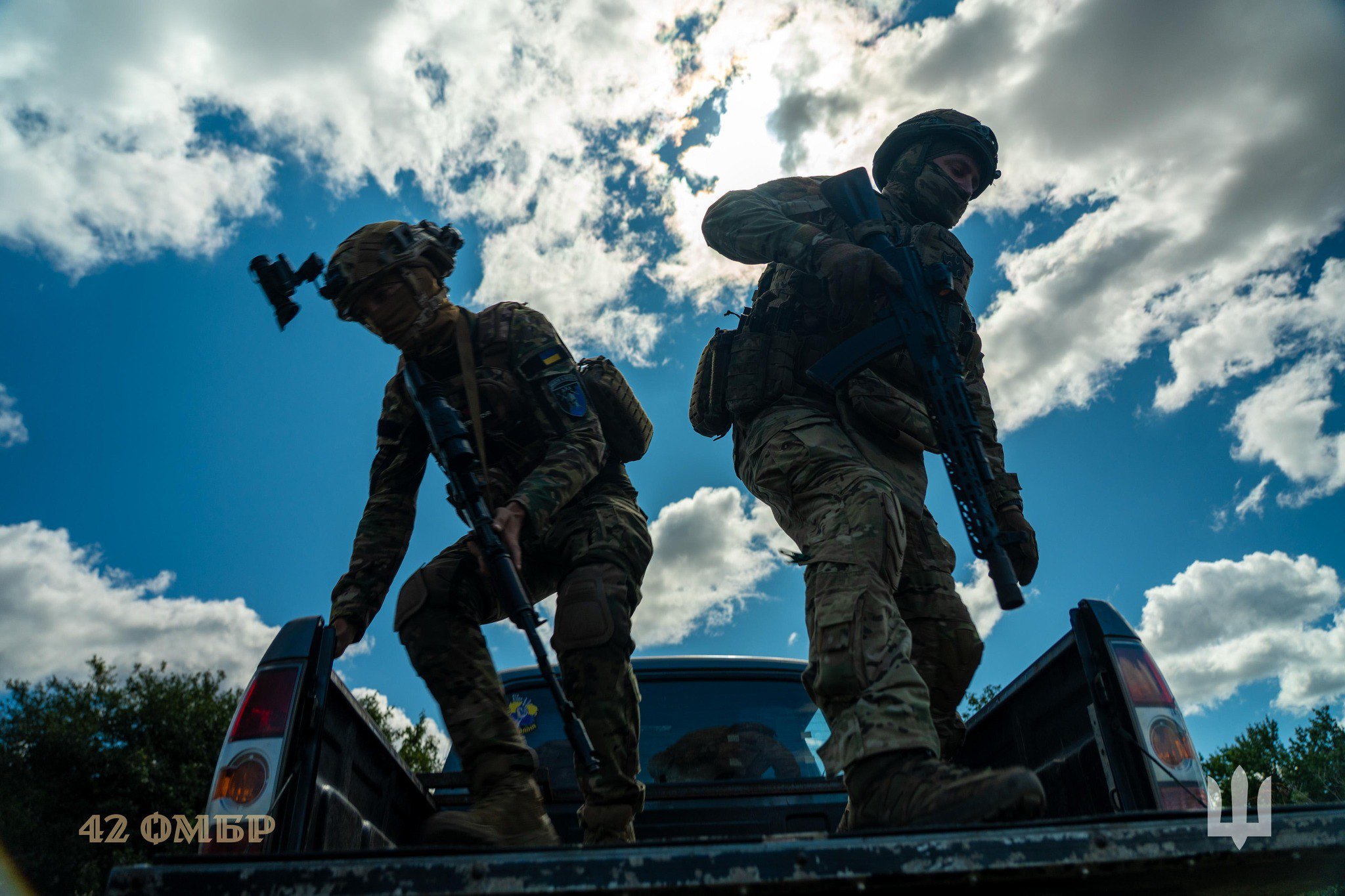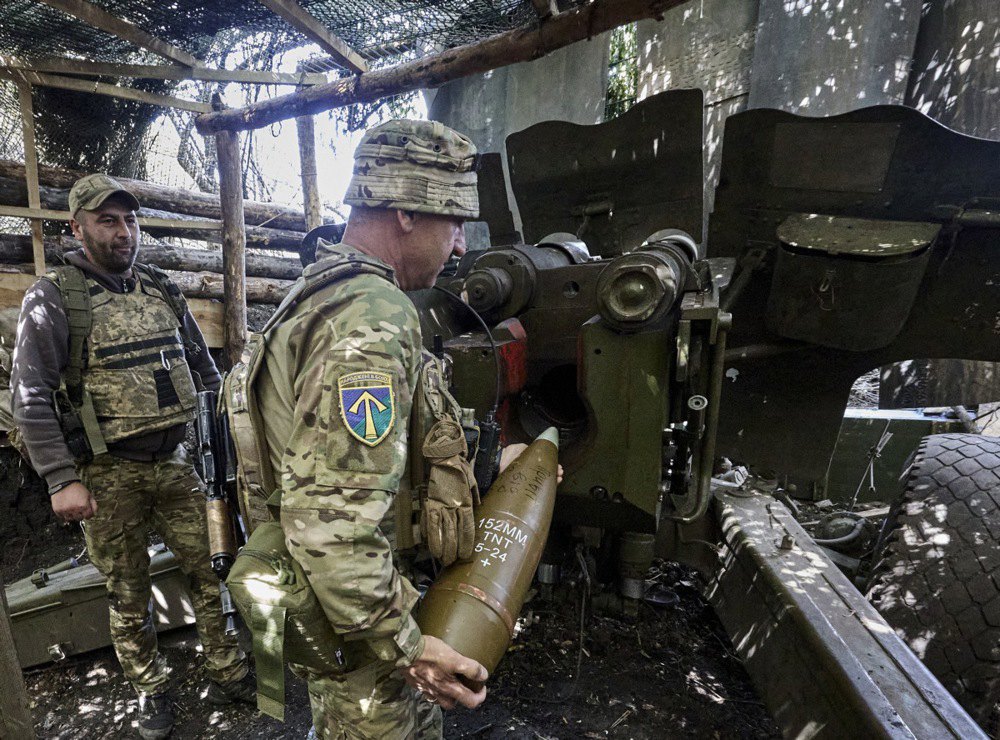The second battalion of the 93rd Brigade attacked from one flank, while Azov and the Da Vinci Wolves attacked from the other.

Those Russians who broke through were hit with cluster munitions, rocket artillery and drone strikes. The armoured groups’ attempt to expand the breakthrough was stopped by drones, with the Russians losing several vehicles.
At least one battalion of the 132nd Brigade was disabled, losing up to 200 soldiers. Another 150 or so fighters are blocked. The Russians are probably supplying them with drones from deep within the bridgehead.
It should be noted that the Russians are also understaffed, and 400-plus fighters are equivalent to a couple of battalions on the front line.
Those units that broke through with weapons they could carry across the lowlands and ravines, or transport by quad bike or motorcycle, are badly battered. Those currently blocked by Ukrainian units need urgent help.
But it is unlikely that well-trained units will remain on the front line for long – under the influence of fibre optics and KABs, they are increasingly turning into infantry, being supplied on foot, quad bikes and motorcycles, and suffering losses in supply vehicles and rear equipment.
Therefore, a counterattack is probable, after which one of the “hundredth brigades” may be brought in on the LZ.

But it is necessary not only to stop the breakthrough, but also to prevent it from expanding – the Russians are withdrawing well-trained units with strong artillery and unmanned components from other areas to restore their combat capability.
It is likely that within five days, fierce fighting will resume in the sector. For now, however, Ukrainian forces are counterattacking and pushing back the enemy with fresh units.
In other words, it will not be enough to recapture the outskirts of Rubizhne, Zolotyy Kolodyaz and Kucheriv Yar. To isolate the bridgehead, small groups must retake the fortifications, take Nikanorivka in a frontal assault and reach the railway embankment, but also advance deeper – cutting off the enemy’s supply line and pushing them back within a year. Kazenny Torets is not Dnipro, but it is sufficient for logistics and for motorcycles with quad bikes.
This is the only way to remove the threat to Dobropillya, prevent a breakthrough of the ‘Novyy Donbas’ line on a wide front, and ensure that Ukrainian units in the Myrnohrad–Pokrovsk agglomeration are not flanked and can continue to resist for many months, following the example of Bakhmut and Chasiv Yar.
Given that the Ukrainian Defence Forces are building fortifications in the nearest tactical rear, and Dobropillya has become the arena for KAB strikes, the enemy is trying to weaken defences, realising the importance of this sector as a gateway to bypassing two fortified agglomerations at once.

The fact that the enemy entered the system of trenches and fortifications of the Novyy Donbas line behind retreating troops is not good. But this has happened before – the enemy broke through defences, new and untested units collapsed, and in some places the Russians managed to approach with beams or advance on motorcycles.
Fortifications are not a panacea. Yet even such simple measures as barbed wire and stakes in an anti-tank trench, combined with a pillbox successfully integrated into the slope of a hill, can work wonders for the stability of engineering defences.
In general, the situation has stabilised, but heavy fighting continues in the sector, where the enemy has well-trained pilots, significant artillery and a numerical advantage. This is only the beginning – the outcome of this battle will determine developments in two operational directions. For Russia, success would mean a possible advance on Ukrainian agglomerations, and they are likely to commit all available forces.







